Naturalist Kevin Short, writing for the Daily Yomiuri, provides further thoughts below on the subject of sacred groves. I imagine the title is not of his choosing, but he seems to have done his Shinto research well enough…. (The full article can be found here; for his previous article, click here.)
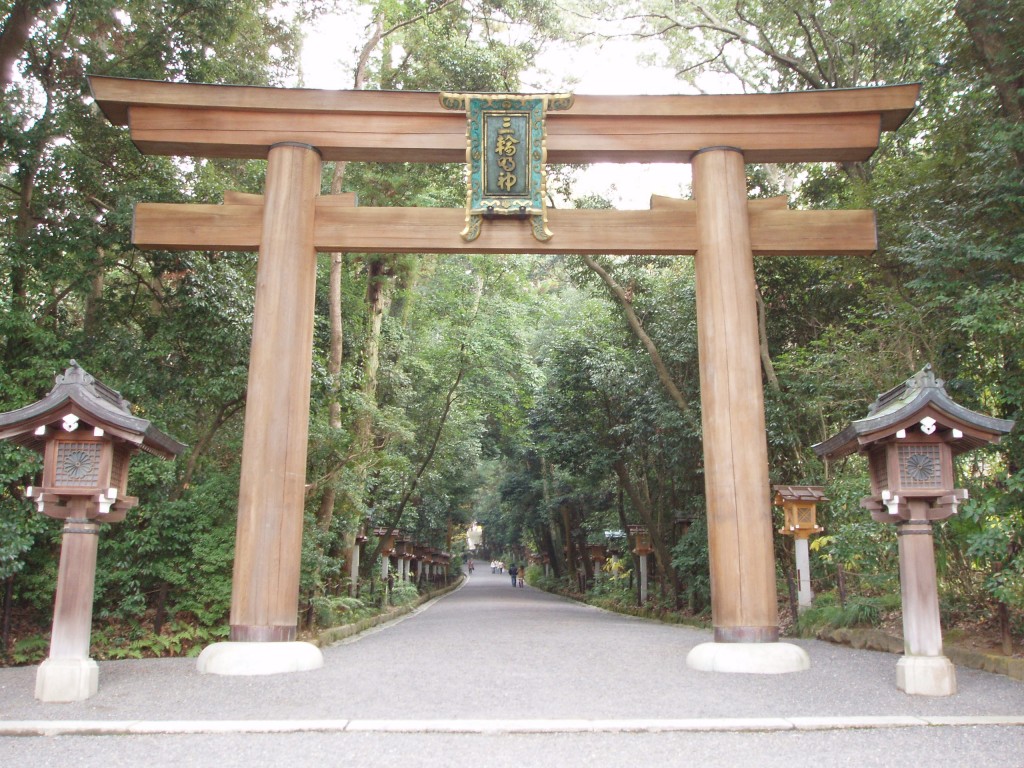
Many Shinto shrines, like Omiwa Jinja pictured here, are deeply embedded in sacred groves
****************************************************************************************************************
Sacred groves amuse nature lovers, offer spiritual refreshments
Kevin Short / Daily Yomiuri Columnist (Feb. 2, 2012)
Visits to shrines and temples are an important part of any tourism experience here in Japan. Visitors enjoy the beautiful historic architecture and sense of peace and tranquility found in the precincts. Shrines and temples, many of which are surrounded by venerable old sacred trees, are also good spots to study nature or simply commune with the natural environment.
Two basic categories of big sacred trees can be found at Japanese shrines and temples. One includes individual trees, often considered especially sacred to the kami or hotoke deities enshrined there, that have been planted in front of the buildings or along the sando, or avenue of approach. At Shinto shrines, these trees will usually be marked off by a shimenawa, a twisted straw rope decorated with strips of paper cut in a zigzag shape, tied around the trunk. This type of tree may include some local native species, such as zelkova (keyaki), but frequently consist primarily of nonlocal types such as camphor (kusunoki), cryptomeria (sugi) or gingko (icho).
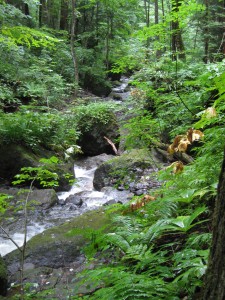
Woodland at Togakushi Shrine
Another category of big tree is found in small sacred groves that are allowed to flourish behind and around the sides of the main building. These trees are often local native species, and in many instances the sacred groves actually preserve small remnants of the original primary forest cover. The Tadasu Grove of the Shimogamo Jinja shrine in Kyoto, for example, contains a rare chunk of primary deciduous forest native to the heavily developed Kyoto Basin.
Sacred groves called chinju no mori are an almost required feature at Shinto shrines, but rich groves can often be found at Buddhist temples as well. The Yushima Seido, a Confucian temple located just adjacent to Ochanomizu Station in central Tokyo, is surrounded by a fine grove consisting of both native and nonnative trees. A more general term for sacred groves, regardless of their religious affiliation, is shajirin.
Today, the spiritual essence of the kami deities worshipped at a Shinto shrine are believed to reside in sacred objects known as shintai, which are housed within a special inner chamber, a sort of holy of holies, inside the honden, or main hall, of the shrine. In front of this stands the haiden, or worship hall, where visitors pay their respects with claps, bows and offerings.
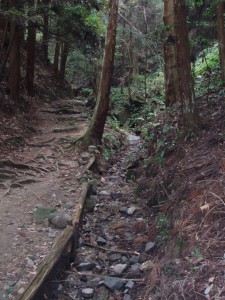
Pathway up the slopes of sacred Mt Miwa
Many historians and folklorists, however, believe that this shintai and honden complex, along with impressive shrine buildings themselves, are later developments. Originally the essence of the kami were thought to reside in specific natural features, called kannabi, such as groves of trees, large or unusually shaped rock formations, waterfalls, or even entire mountains.
Some shrines still preserve this original kannabi arrangement. Omiwa Jinja, the most important shrine in Nara Prefecture, for example, totally lacks a honden. The worship hall opens out directly onto the heavily forested slopes of Mt. Miwa. The deity enshrined here, Omononushi, is considered to be the spiritual embodiment of the mountain itself.
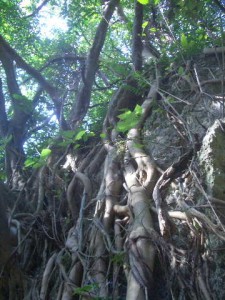
Trees at an utaki in Okinawa
This ancient layout is also well-preserved at shrines on the Ryukyu Islands, called utaki. Here, simple pavilions open out to groves of trees, in which the deities are believed to reside. Only female priests, called noro, are allowed to pass beyond the outer pavilion and tend the grove.
In the southern Kanto region, sacred groves are usually dominated by huge chinquapins (sudajii) and several species of evergreen oak, which are generically called kashi in Japanese. These are the same species that form the stalwarts of the region’s primary old-growth forests. They are evergreen trees with thick, shiny leaves that allow very little sunlight to pass. Several of these trees usually overlap their upper branches to form a dense canopy, keeping the atmosphere inside the grove cool and dimly lit. Only occasional shafts of bright sunlight thrust through small gaps in the branches.
Sacred groves often play an important role in conservation of local biodiversity. In urban areas they may represent the only substantial chunk of greenery for miles around. Even in countryside habitats, where the overall forest cover ratio remains high, the groves may be vital to regional species richness. Typical countryside forests, such as managed coppices, orchards and timber plantations, are mostly secondary or artificial in nature, containing younger trees that are harvested at regular intervals. Only in the protected sacred groves can trees grow to their full size and develop into primary forest habitat.
Sacred groves are found the world over. In Nigeria, for example a sacred grove at Osogbo, dedicated to the Vodoun goddess Osun, has been designated a UNESCO World Heritage Site. Surveys in India have identified well over 10,000 sacred groves, mostly managed and protected communally by individual villages.
Here in Japan, the total number of sacred groves must be as high as several tens, or even hundreds, of thousands. These include immense forests surrounding major shrines such as Ise Grand Shrines and Kasuga Grand Shrine, the latter of which is part of a UNESCO World Heritage Site. On the other end of the scale are groves found at uncountable tiny local shrines and temples, which may contain only several to a dozen or so trees each. Even isolated roadside stone Buddhas and commemorative mounds are usually protected by one to several sacred trees.
Sacred groves are fine spots for studying botany or watching birds. They also provide ideal sanctuaries for prayer, meditation, quiet contemplation, yoga and other forms of spiritual refreshment and empowerment.
************************************************************************************************************************
Short is a naturalist and cultural anthropology professor at Tokyo University of Information Sciences.
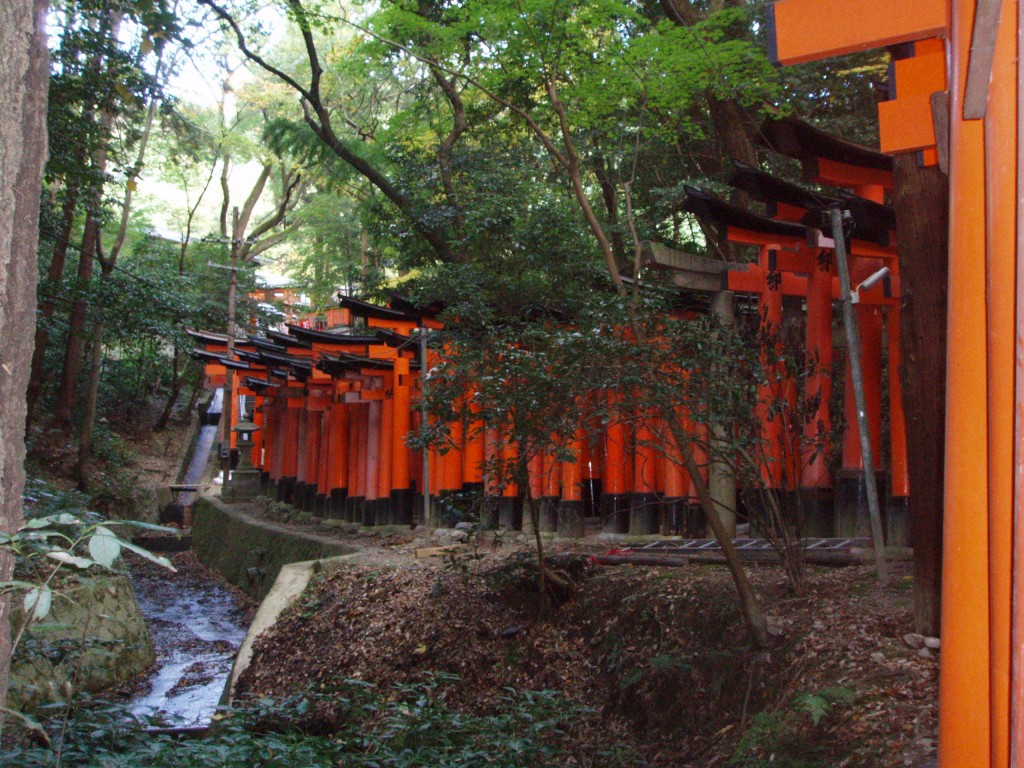
Woodland on the hill of Fushimi Inari

Leave a Reply